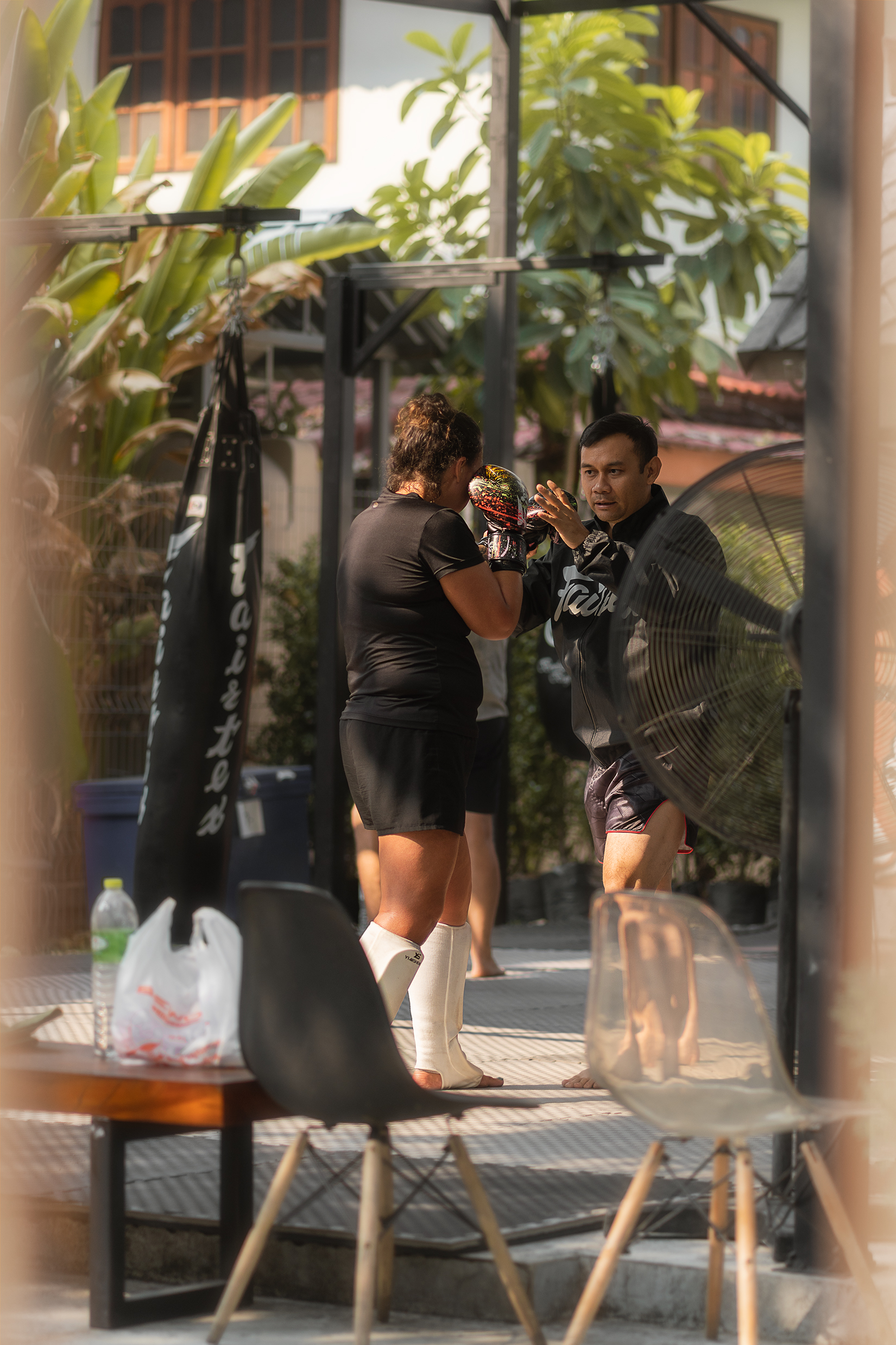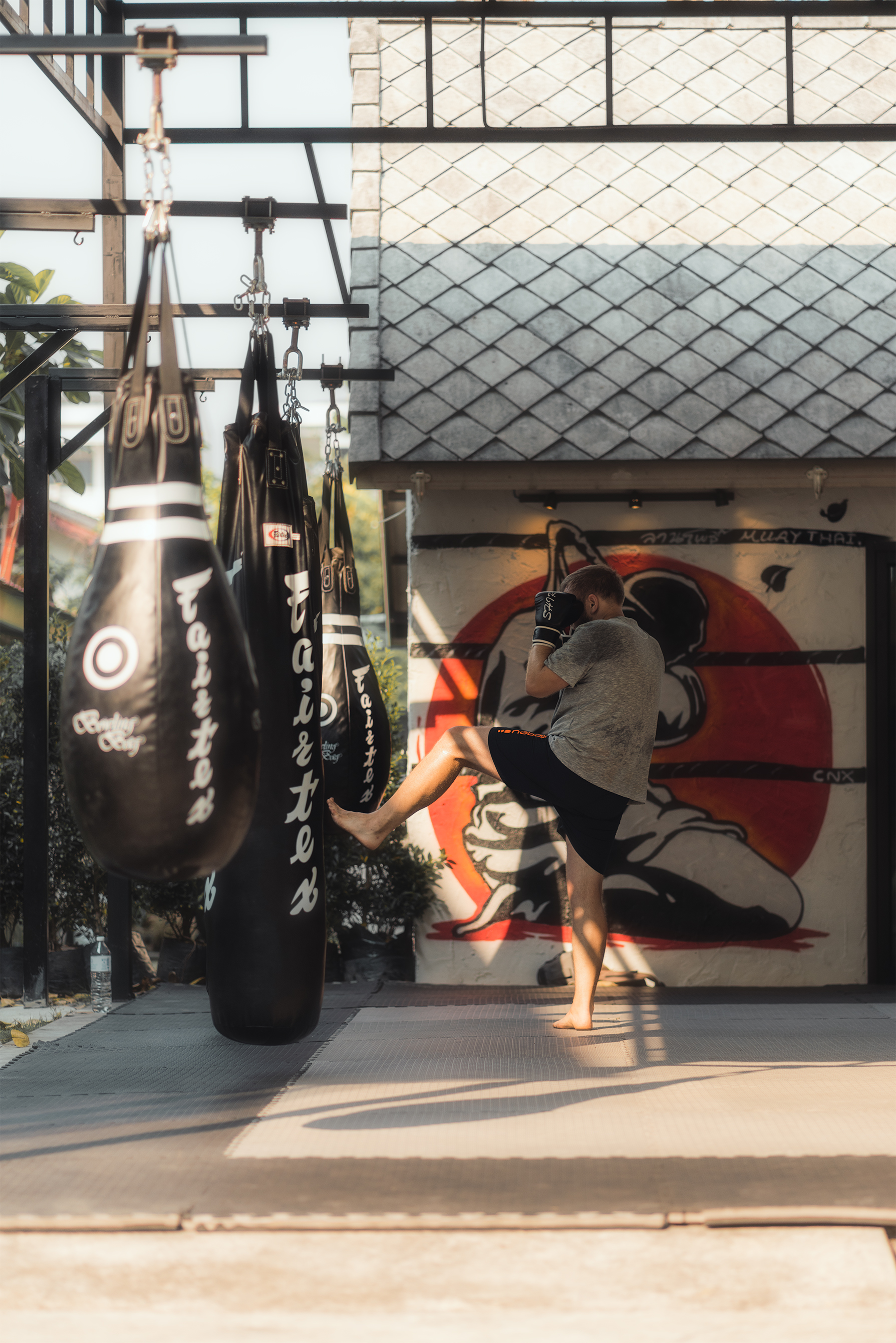Fit But Fragile

"What are you training for?"
Between my fourth set of heavy squats at 6 AM, a woman at my gym asked me this. After all, most people don't voluntarily push their limits in the dark hours before sunrise unless they're chasing medals or trophies. Powerlifters train for meets. Runners train for races. But training to outrun the future I witness daily in my hospital's long-term care unit? That's not exactly gym small talk.
"I'm training for life," I said, trying not to sound too melodramatic.
She laughed, probably thinking I was being dramatic...
But, I was thinking about the previous day's hospital rounds. The daily parade of decline I witness as people's bodies betray them in their most vulnerable moments. The decline that starts decades before modern medicine even thinks to look for it.
The hip fracture that stole a grandmother from her family? That story began with unnoticed muscle loss in her forties. The heart failure that forced a father to miss his son's wedding? That started with poor cardiovascular fitness in his thirties. The dementia that erased a lifetime of memories? Those warning signs were there in midlife — all of it measurable, if only we'd known where to look.
As a hospitalist, I don't just treat disease. I witness the final chapter of choices made decades earlier.
Each hospital admission tells two stories: today's crisis and yesterday's missed signals. While we obsess over steps and calories, the real predictors — VO2 max, muscle mass, metabolic health — slip by unmeasured until it's too late.
Sweat Without Strategy
I see this disconnect every morning at the gym, where we mistake athletic achievement for health, performance for protection, medals for immunity.
There's the marathoner next to me. Her Instagram is a shrine to race medals and "clean eating." Her Apple Watch celebrates another perfect week while mine just checks for signs of life between hospital shifts (thanks, doctor schedule). She's crushing her move goals and collecting medals, but there's a darker story her watch can't track: ask her to do a pull-up, and gravity mocks her medals. Her strength tests read like a warning label: Bottom 20% for her age.
Twenty years from now, those marathon medals will have built her endurance, but they won't be enough alone to prevent a fall. Her dedication is admirable. It takes grit to train for long races and achieve such milestones. But focusing on a single aspect of fitness, like endurance, often leaves gaps in the bigger picture of what our bodies need to thrive for decades to come.
These athletic achievements, though impressive, build only partial foundations for health. They're chapters in a larger story, but not the complete narrative our bodies need for longevity.
Every January, we pick our tribe, cardio or strength, and dig our trenches there. While we celebrate finish lines and personal record (PR) boards, our bodies quietly track a more complete set of scores — ones that determine whether we'll thrive in the decades ahead.
For decades, "just move" has been medicine's universal prescription. It's our profession's equivalent of "eat your vegetables." It's like handing someone a compass that only points "somewhere north" and calling it navigation. I've written these prescriptions myself, watched patients nod and smile, both of us knowing it's not enough. I've also logged countless miles and lifted endless weights without knowing if I was building what really mattered.
Now, between sets that leave me gasping, I wrestle with better questions:
- Which measurements actually predict our future health?
- How do we know if we're building the right kind of resilience?
- What numbers should we really be tracking?
When I'm grinding through another workout at dawn, I'm not just chasing better numbers — I'm trying to buy time.
Time for adventures I haven't taken yet.
Time to remain independent and capable.
Time to be the person who helps others up from their chairs, not the one needing help.
But, time isn't bought blindly. It's earned by understanding the quiet signals our bodies send long before disease announces itself. We need to learn the language of longevity, a dialect few of us were ever taught to speak.
Three key measurements help us start this vital conversation with our bodies, speaking a language most fitness trackers never learned to translate.


The Numbers That Buy Us Time
1.VO2 Max: Your Body’s Hidden Speed Limit
Most people see VO2 max as just another fitness metric — the difference between an easy 5K and gasping up stairs. But, I read it differently.
It's the number that predicts who makes it to their grandchild's graduation and who watches from a video call. Who dances at their daughter's wedding and who struggles to make it down the aisle.
VO2 max measures the maximum amount of oxygen your body can utilize during intense exercise. It serves as an indicator of how efficiently your heart, lungs, and cell machinery work together to deliver oxygen—a critical function that supports nearly every aspect of your health, from energy levels to brain function. Beyond making daily activities easier, it's an important predictor of whether you're able to show up for life’s pivotal moments.
The science backs this up with stark clarity. Multiple landmark studies (including one following 122,000 patients) showed that having a low VO2 max is four times deadlier than being a chain smoker. Not because being out of breath kills you, but because poor cardiovascular fitness creates a perfect storm for everything from diabetes to dementia.
A VO2 max in the bottom 25% multiplies your risk of early death fivefold. It also leaves you far more exposed to chronic diseases that can rob you of your independence and quality of life — diabetes, hypertension, dementia, and cancer.
But, here's what gives me hope: just moving from "poor" to "below average"—a change most people can achieve in months—cuts that risk in half. It’s like building a shield against time, offering protection that no medication in our current arsenal comes close to delivering.
2.Visceral Fat: The Hidden Saboteur
Standing in front of patients day after day has taught me something medical school never could: the mirror lies, and it lies beautifully.
I've seen seemingly "fit" individuals crumble under the weight of hidden health burdens, while those society might label "overweight" sometimes carry surprising metabolic health.
Mirrors sell stories. Body composition scans tell truths.
That layer of fat you can pinch? It's the one we obsess over but matters least. The real threat lurks deeper: visceral fat, the silent saboteur wrapped around your organs. Unlike the superficial fat beneath your skin, visceral fat actively drives chronic inflammation and metabolic imbalances, accelerating conditions like diabetes, heart disease, and even certain cancers.
This is where the scale lies twice: first about the problem, by focusing your attention on visible fat rather than the hidden dangers of visceral fat; and second about the solution, by celebrating weight loss that might come from precious muscle instead of harmful visceral fat.
Those five pounds you just lost? Congratulations - but what exactly did you win? The grand prize (visceral fat), the booby prize (precious muscle), or just the consolation trophy (superficial fat)? The mirror and scale might be applauding while your metabolic health quietly deteriorates.
A 2018 European Heart Journal study revealed the deception: "fit-looking" individuals with high visceral fat faced the same heart attack risks as visibly overweight peers. This is why I insist on DEXA scans; they see past the mirror's lies. You might be winning the reflection game while losing the health war.
3. Strength: The Insurance Policy Most People Skip
Here’s what terrifies me as a doctor: the moment someone slips on a curb or misses a step on the stairs and breaks their hip.
It seems like an accident; a random, unfortunate moment. But that moment was decades in the making. It began in their 30s and 40s, as muscle strength quietly eroded and balance faltered, unnoticed and untreated.
The same quiet decline that makes a fall catastrophic also sets the stage for conditions like dementia. That diagnosis at 65? The risk factors were measurable in muscle loss decades earlier. Every day, I watch patients receive diagnoses they think came out of nowhere, when their bodies had been warning them for twenty years through declining strength.
Your muscles aren't just for lifting weights. They're your body's command center and shield against decline. They regulate glucose, fight inflammation, protect your brain, and keep you stable. Strong muscles don't just prevent falls; they slash your risk of dementia, cancer, and diabetes.
In the hospital, I witness a devastating cascade: a fall leads to a broken hip, then a hospital stay, and then rapid muscle loss. Within a year, 40% of these patients will be gone—not from the fall itself, but from the vulnerability that follows.
The link is clear: muscle is life. Studies show that low muscle mass increases your risk of early death by 60-67%. This is why preserving and building muscle throughout your life isn’t just about aesthetics or athletic performance—it’s about survival.
After age 30, your body starts shedding 3-5% of muscle mass every decade unless you actively fight back. And among all measures of muscle strength, grip strength stands out as an unassuming yet powerful predictor of longevity.
Research consistently shows that it outperforms most medical tests in forecasting survival, acting as a barometer for your overall physical resilience. While leg strength also plays a critical role, grip strength is generally easier to measure and has become a convenient proxy for overall strength in medical research.
The good news? Unlike many aspects of aging, this isn't a battle we're destined to lose. Even 90-year-olds have demonstrated the ability to build muscle and strength with the right approach.
Strong at 65 isn't a gift from the universe. It's a love letter you write to your future self, now.


Beyond "Just Move"
Let me tell you what I do, what I insist my loved ones do, what I wish every patient had done decades ago. And if you're reading this thinking "sooner" has already passed you by, take heart. I've seen 70-year-olds transform their health metrics more dramatically than some 30-year-olds. Your body is ready whenever you are.
First step: Get your numbers. All of them.
Think of these metrics as your body's early warning system [recognizing these are simplified versions of complex medical indicators]: DEXA scans exposing the truth behind the mirror's lies, VO2 max revealing how much life your heart can sustain, and grip (or leg) strength forecasting whether you'll need help opening jars at 55 or helping others move furniture at 70.
When I examine these numbers for myself, I'm reviewing early drafts of my future health. They tell me where to focus, where to push harder, where to pull back. They offer a chance to edit my story while there’s still time.
Here's your weekly insurance policy against my hospital bed:
2-3 strength sessions focusing on compound movements (because bicep curls alone won't help you wrestle your luggage into overhead bins)
2-3 steady (zone 2) cardio sessions at a pace where you can hold a conversation about pizza toppings (if you're too breathless to argue about pineapple, you're pushing too hard — dial it back)
1 high-intensity session (“outrunning a zombie” level of effort)
If this template seems overwhelming, remember: moving the needle doesn't require moving mountains. Each small victory — whether it's five minutes of breathwork or learning to properly lift a grocery bag — writes a better page in your story.
Start where you are, use what you have, and show up in whatever way you can.
The key isn't following this template like it's gospel. Think of it as preventive diligence: find the weak spots now, in your thirties and forties, before they become the chronic diseases I diagnose in my fifties and sixties patients.

When Movement Meets Purpose
“What are you training for?"
That question still lingers in my mind from the gym to my hospital rounds every day. While I'm loading plates onto the bar at 6 AM, I'm thinking about the patient I diagnosed with early dementia that week - a battle that began silently decades ago. While I'm pushing through another zone 2 training session, I'm thinking about my mother's cancer diagnosis at 49. Every training session becomes a rebellion against that future.
There's a world of difference between exercise and training. Exercise mistakes motion for progress: random runs, scattered lifts, whatever feels good today. Training measures what matters and moves with purpose. Every rep — every heart rate zone — serves tomorrow's health, not today's sweat.
The reality is that the moment a doctor delivers a diagnosis isn't the beginning of the battle. It's the echo of a fight that was won or lost decades ago.
Some of these battles we'll lose despite our best efforts. I've watched genetics play cruel hands to even my most dedicated patients. But right now, in your body, these processes are already in motion.
So what am I training for?
I'm training to stay on this side of the hospital bed. I'm training to be the one helping others up from their chairs, not the one needing help. I’m training to write a different ending to my own.
This doesn't mean you can't chase marathon times or powerlifting records. Those are worthy athletic achievements. But recognize them for what they are: athletic goals, not guarantees of longevity. The numbers that matter most aren't always on your finisher medals or gym leaderboard. They are written in your cells, your mitochondria, your muscles. They’re the choices you’re making today that determine whether you’ll live with abundant reserves or face a future of physical bankruptcy.
Your body whispers its truths decades before disease shouts.
Listen early, and you can revise the script of your future, making edits that might mean the difference between thriving and just surviving.
Listen late, and you might find yourself reading an ending you didn’t choose — in a hospital bed, wondering why no one taught you the language your body had been speaking all along.


Fun fact: Every photo in this essay was taken by yours truly. Photography has been my quiet escape, a way to capture the world when words fall short.
One a more personal note, I wrestle with a small insecurity. People often tell me they like my photos more than my writing. Ouch, right?
But hey, we’re all works in progress. One day, the goal is for you to feel equally torn between the two. Or, dare I hope, to have my words edge out the pictures. Until then, I’ll keep chasing the perfect sentence while you enjoy the view.
And finally, a heartfelt gratitude to Deepti Chopra, Jon Bula, and Chris Wong whose insights and feedback helped shape this piece.
Reflections
Monthly updates for friends & family: new writing, photos, & highlights.